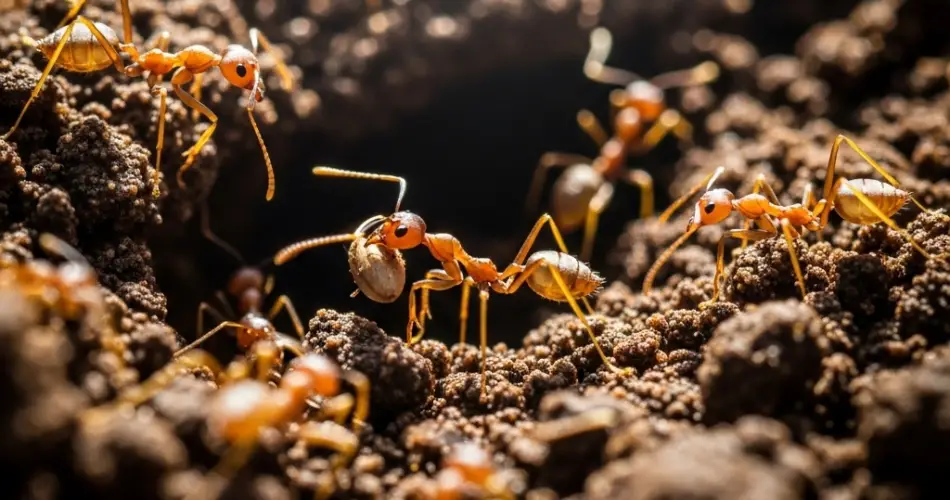Ants in the house can be a frustrating and persistent problem, especially during warmer months. Many people immediately turn to commercial insecticides to get rid of them — but these products are often loaded with harsh chemicals that can pose risks to your health, pets, and the environment. Fortunately, there’s a safer, cheaper, and surprisingly effective alternative that you probably already have in your kitchen: aluminum foil.
That’s right — aluminum foil isn’t just for baking or wrapping leftovers. With a few simple tricks, it can be used to create highly effective ant traps and barriers that stop infestations naturally, without using rice or toxic products.
Why Avoid Commercial Ant Insecticides?
Most over-the-counter ant insecticides contain strong chemical compounds designed to kill on contact or poison entire colonies. While effective, these products can:
-
Leave harmful residues on surfaces
-
Be dangerous to children and pets
-
Pollute indoor air with synthetic fragrances and toxins
-
Lose effectiveness over time as ants develop resistance
Plus, you often need to reapply them regularly, which adds cost and effort — and increases exposure to potentially harmful substances.
Natural solutions, on the other hand, offer peace of mind and are often just as effective when used correctly.
How Aluminum Foil Helps Against Ants
Aluminum foil works against ants in two main ways:
-
As a Physical Barrier
Ants dislike walking over foil. The texture and reflective surface confuse and repel them. Placing strips of foil in key locations can stop ants from entering or crossing into specific areas. -
As a Trap Base
Foil can be used as a clean, reusable surface to set up homemade bait traps. It’s easy to shape, doesn’t absorb moisture, and can be disposed of or reused with minimal mess.
Let’s look at both methods in detail.
Method 1: Use Aluminum Foil as an Ant Barrier
If you’ve spotted ants entering your home from a specific crack, windowsill, or doorway, use aluminum foil to block or deter their path.
How to do it:
-
Tear a long strip of aluminum foil, wide enough to cover the area where ants are passing.
-
Press it firmly into place around window sills, along door thresholds, or under plant pots.
-
For appliances or pantry shelves where ants tend to gather, line the base with foil and tuck the edges to keep it secure.
Ants dislike crossing foil due to the unfamiliar surface and reflective glare. This simple trick can significantly reduce their movement indoors.
Method 2: Make Homemade Ant Traps Using Foil (No Rice Needed)
Instead of using rice or expensive commercial bait traps, you can make a quick ant lure using pantry ingredients and aluminum foil.
Ingredients:
-
1 tablespoon of sugar or honey
-
A few drops of water
-
A small square of aluminum foil
Steps:
-
Tear a piece of foil about the size of a coaster (3×3 inches or 8×8 cm).
-
Place a small amount of sugar or a drop of honey in the center. Add just enough water to create a slightly sticky texture.
-
Place the foil trap near ant trails, near windows, or anywhere you see ant activity.
Ants are attracted to the sugar, and once they gather at the bait, you can either:
-
Let them carry it back to the nest (they will eventually abandon the area),
-
Or remove the foil and dispose of the ants safely outdoors.
Note: You can use borax in tiny amounts mixed with sugar if you want a stronger solution, but only if you’re certain it’s safe around children and pets.
Additional Natural Ant Prevention Tips
While aluminum foil is a great tool, you can boost its effectiveness with these complementary tricks:
-
Clean Up Crumbs and Spills Immediately: Ants are drawn to even tiny bits of food.
-
Seal Food Containers Well: Store sugar, flour, cereals, and pet food in airtight containers.
-
Wipe Surfaces with Vinegar: Ants dislike the smell and vinegar removes the scent trails they follow.
-
Seal Entry Points: Use caulk or weatherstripping to close off common ant entrances.
When to Replace or Refresh Foil Traps
Homemade foil traps should be replaced every few days, especially if they become too sticky, wet, or crowded with ants. Keep an eye on ant activity — if it decreases, you’re on the right track.
You can also fold and reuse the foil after rinsing, making this method both eco-friendly and cost-effective.
Final Thoughts
There’s no need to rely on harsh chemical insecticides to tackle an ant problem. With something as simple as aluminum foil and a bit of sugar or honey, you can create safe, natural, and effective ant traps at home. This method is not only budget-friendly, but also child- and pet-safe when handled correctly.
Try it today and enjoy a pest-free space — without toxic sprays or complicated setups.



